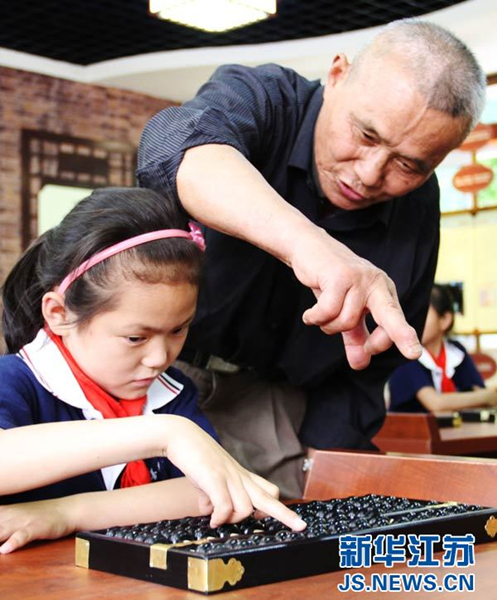Chinese Zhusuan


Weng Jinyuan, a volunteer in his 70s, teaches a child how to use an abacus in Suzhou, Jiangsu province. [Photo/Xinhua]
Chinese Zhusuan, which means knowledgeable practice of mathematical calculation through the abacus, is regarded as the fifth Great Chinese Invention.
It has played a vital role in giving an impetus to mathematical studies, promoting algorithmic practices and fostering intelligence.
Chinese Zhusuan is a time-honored traditional method of performing mathematical calculations with an abacus.
The abacus is a calculating tool invented by ancient Chinese people and was first recorded in the Han Dynasty (206BC -- 220AD).
Practitioners perform addition, subtraction, multiplication, division, and exponential multiplication, and also determine roots and do more complicated equations by moving beads along the abacus rods according to defined formulas.
Zhusuan was first initiated by Liu Hong (129AD -- 210), an astronomer and mathematician who was later honored as "calculating-sage" by the Chinese people.
Even today, Zhusuan contributes to calculating techniques, educational psychology and intellectual development and influences various aspects of society such as cultural creativity.
The calculating method was selected as China's 30th entry to the World Intangible Heritage program in December 2013.




